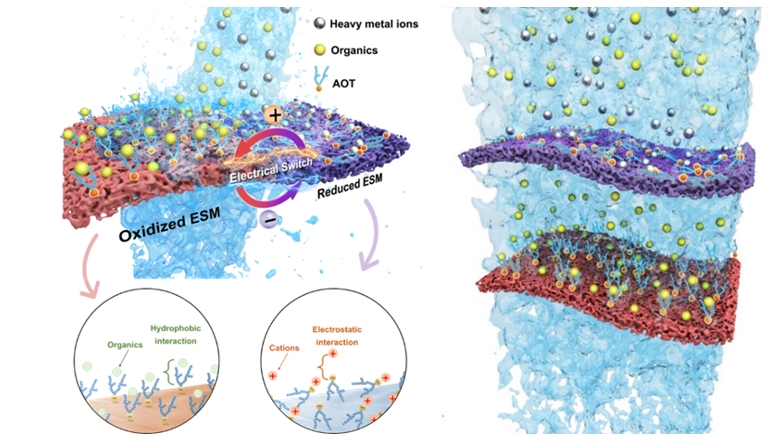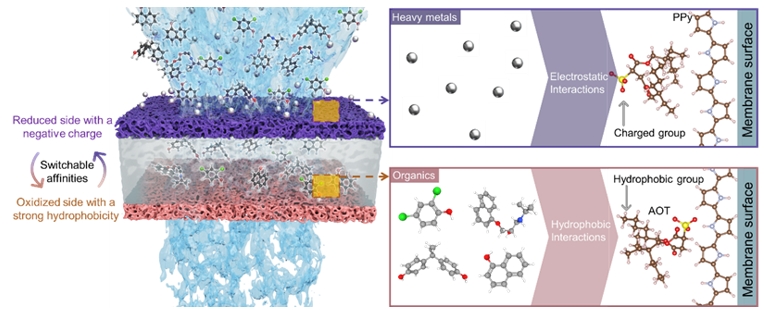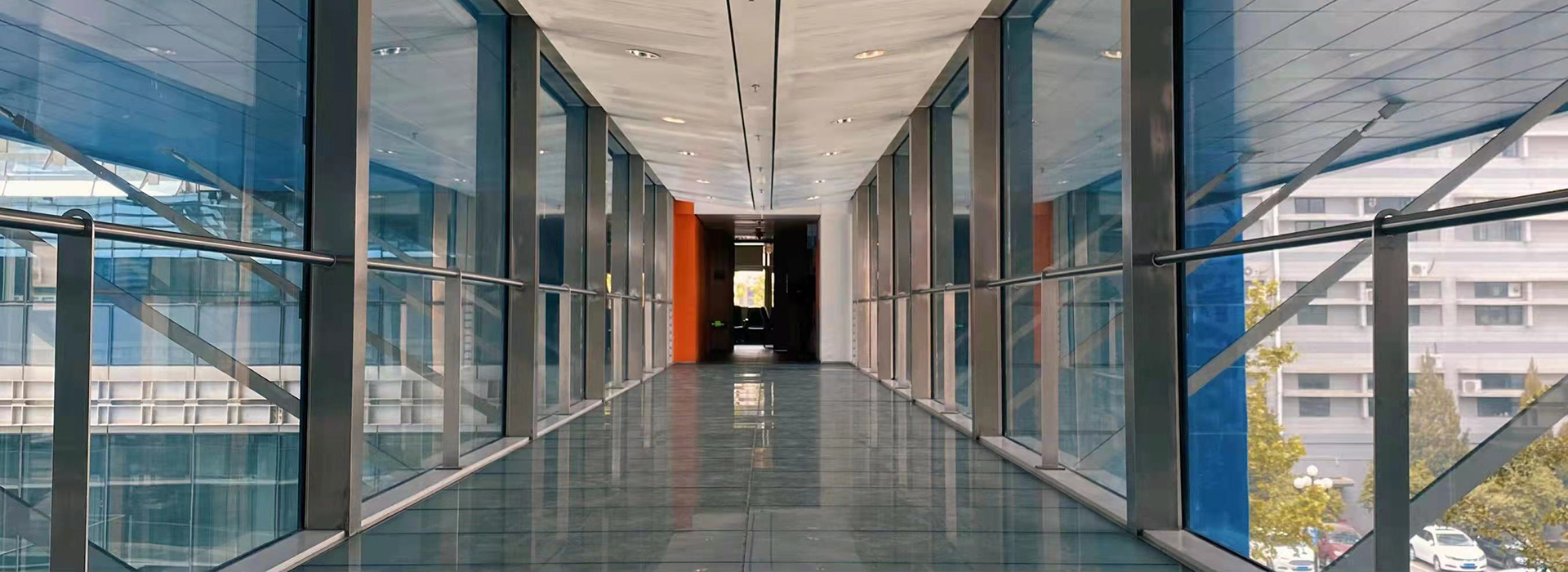A major global environmental problem is the presence of micropollutants in drinking water, including heavy metal ions and hazardous organic micropollutants. Due to its low selectivity, the third-generation drinking water purification technology, which is based on ultrafiltration, has significant difficulties in treating these tiny micropollutants. Therefore, developing ultrafiltration membranes with strong interactions for targeted pollutants (e.g., electrostatic interactions, hydrophobic effects, and π-π interactions) to enhance the removal of these micropollutants remains a formidable scientific challenge.
Lan Huanchun’s research group has successfully fabricated a novel polypyrrole-based electrically controlled adsorptive ultrafiltration membrane with a tunable surface charge, resulting in permeability-independent selectivity. The membrane realizes high Cr(VI) removal performance (<50 μg/L) and treatment capacity (>3500 L/m2) at a high water flux (283 L/m2/h), as well as reusability after the application of a potential. This research, entitled "Electrically Controlled Adsorptive Membranes with Tunable Affinity for Selective Chromium (VI) Removal from Water", was published on Environmental Science & Technology, August 30, 2023.

Figure 1. Schematic of rapid separation and in-situ desorption of Cr (VI) by the electrically controlled adsorptive membrane
Targeting the coexistence of weakly polar organic pollutants and heavy metal cations in water, the research group has further introduced an amphiphilic dioctyl sulfosuccinate (AOT) molecule into the polypyrrole layer, fabricating an AOT-doped electrically controlled adsorptive membrane mediated by both hydrophobic and electrostatic mechanisms. Owing to the spatial orientation change of AOT molecules during the redox process of polypyrrole, the oxidized and reduced membrane surfaces expose the hydrophobic alkyl chains and charged sulfonate groups of AOT molecules, respectively, achieving a good single-pass filtration efficiency (>99%, taking 1-naphthylamine and Pb2+ as examples) and high permeability (227 L/m2/h). Applying a reversible potential can release the captured substances from the membrane, thus enabling membrane regeneration and self-cleaning without the need for additives. This research, entitled "Electrically Redox-Active Membrane with Switchable Selectivity to Contaminants for Water Purification", was published on Environmental Science & Technology, October 31, 2023.

Figure 2. Schematic illustration of the switching and decontamination in the AOT-doped electrically controlled adsorptive membrane
Inspired by the above mechanisms, Lan’s research group constructed AOT-doped polypyrrole functional layers on both sides of the ceramic membrane, designing a Janus membrane with electro-induced multi-affinity interfaces. By applying an appropriate voltage to the functional layers on both sides of the membrane, the transient oxidation and reduction of the polypyrrole (PPy) layer on opposite sides of the Janus membrane allow charged and hydrophobic surfaces that exhibit high affinities for heavy metals and organics, respectively. Therefore, the Janus membrane enables the simultaneous removal of several organic micropollutants and heavy metals with a separation efficiency of approximately 100% and reversible regeneration without the addition of any chemicals, lowering 98% energy consumption compared to commercial nanofiltration membranes. This research, entitled "A Janus membrane with electro-induced multi-affinity interfaces for high-efficiency water purification", was published on Science Advances, May 24, 2024.

Figure 3. Working principle of the electro-controlled Janus membrane.
These studies are presented by the Center for Water and Ecology, Tsinghua University. Dr. Liu Lie , from the School of Environment, Tsinghua University, is the first author of these papers. Professor Lan Huachun in the School of Environment is the corresponding author of these papers. These studies were funded by innovative research groups and others.





